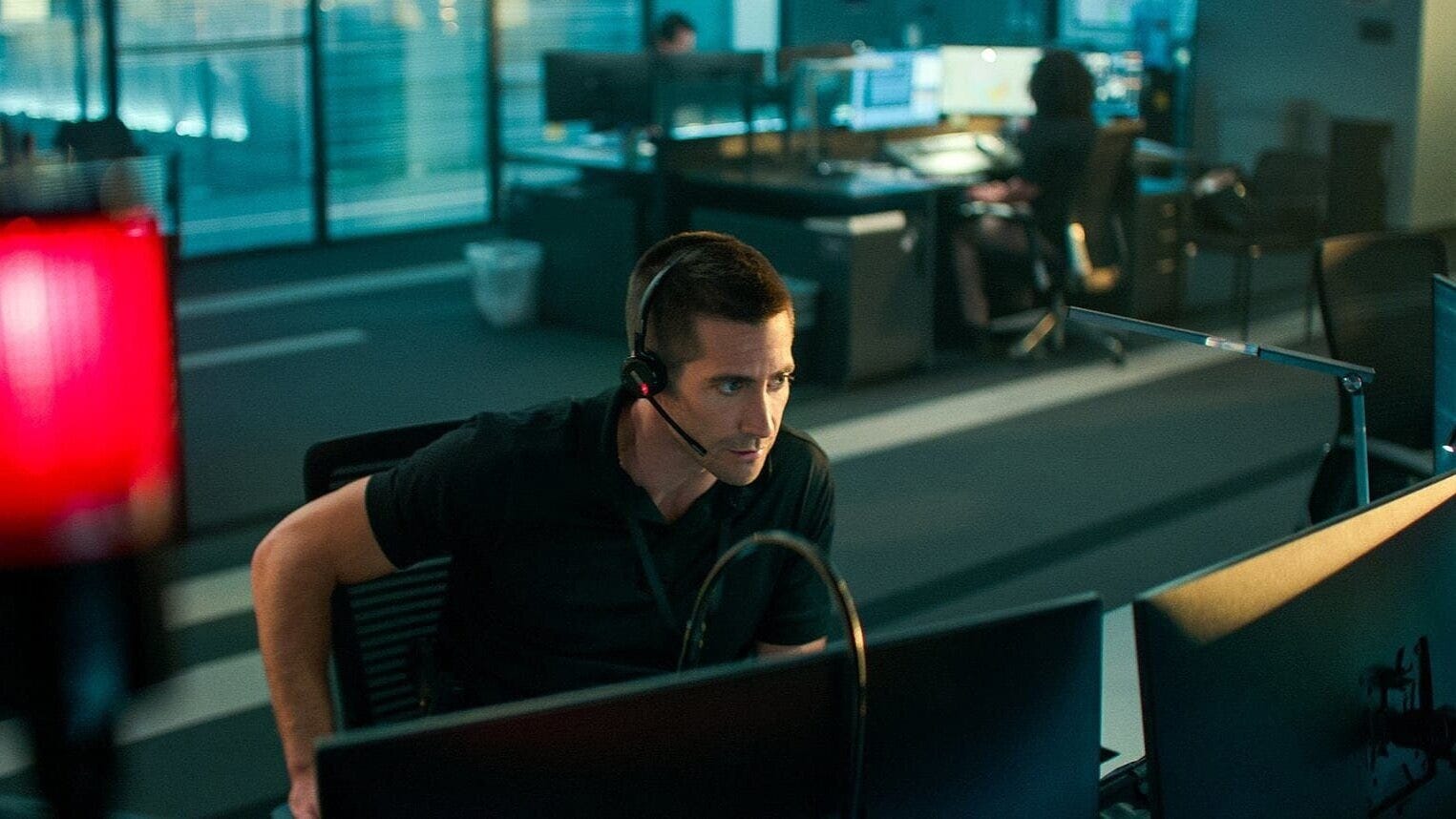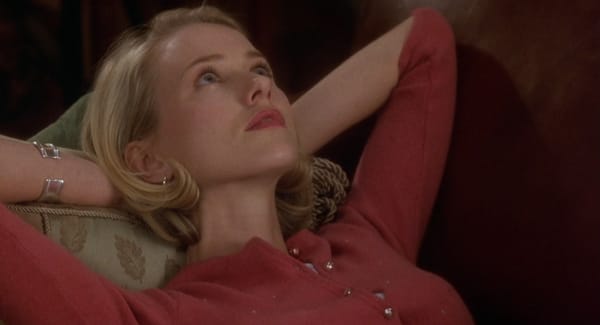"Guilty" Complex
A Netflix "original" and its Danish original work equally well in very different ways

The Nut Graff: Two versions of a thriller are available for streaming, a Danish original and its Hollywood remake. They’re both worthwhile — depending on what you want.
Here’s a question for you: Which style of filmmaking do you prefer, Hollywood or European? (Maybe it should be: Which style do you prefer today?) You don’t often get two movies where every variable is controlled except narrative style, but with the arrival on Netflix of the new Jake Gyllenhaal project, “The Guilty,” audiences have a rare chance to interrogate their own tastes, if they have the time and inclination. It’s a lab experiment where everyone wins.
“The Guilty” is being promoted as a Netflix original when it’s actually a remake of an award-winning Danish film “Den Skyldige” (“The Guilty,” or “The Culprits”), Denmark’s 2018 Oscar submission and a movie that can be rented on Amazon, Apple TV, YouTube, and elsewhere. And when I say a remake, I mean as close to a carbon copy in script, dialogue, character motivation, and plot as is possible. It’s the tone and energy of the two movies that are different, and those differences say everything about what film producers in different cultures believe that audiences want.
A man is in a room: An emergency services operator (911 here, 112 in Denmark) manning the phones on a typical night. A guy calls freaking out on drugs; an ambulance is dispatched. A man calls in from his Mercedes in a shady part of town; he’s just been robbed and doesn’t want to admit he was mugged by a prostitute. Then a terrified woman phones in from a car on the highway, pretending to talk to a young child while a male voice can be heard in the background. “Is someone with you?” the operator asks the woman. “…Yes.” “Do you know the person you’re with? Do they have a weapon?” “Yes” to both.
“The Guilty” then becomes a suspense-filled race to find a moving target, with the operator – Asger (Jakob Cedergren) in the Danish version, Joe (Gyllenhaal) in the American – desperately toggling between the highway patrol dispatcher, local police, and other agencies and individuals. We learn that the operator is a cop, and we learn that he is working the emergency desk because he’s been suspended for something he did that wasn’t at all nice. We see that he’s willing to go to extralegal extremes in his effort to rescue Iben/Emily – who’s never more than a voice on the phone – and we come to realize that this man is wound dangerously tight.
Co-workers can be glimpsed in the background and occasionally come into focus, but both versions of “The Guilty” are essentially one-character shows, a mini-genre that is tricky to pull off but can be spellbinding when it works. The classic example is the 1943 radio play “Sorry, Wrong Number” with Agnes Moorehead (the 1948 film version with Barbara Stanwyck added flashbacks and additional characters); the fantastic 2014 movie “Locke” – 90 minutes of Tom Hardy in a car on the speakerphone, and that’s all you need – is a more recent iteration. “The Guilty,” which puts us visually in the operator’s catbird seat and emotionally in that car somewhere out there in the night, has enough bumps in the road to keep us engaged, and it throws a lulu of a twist toward the end that radically redraws the game board. I don’t think you’ll regret seeing either version of the story.

But the differences are stark. I watched the new one first: Directed by Antoine Fuqua (“Training Day”), a filmmaker who can alternate between skilled professionalism and hackwork (sometimes in the same movie), the 2021 “Guilty” starts at Mach 4 and revs up from there. The control room in which Joe and the other operators work has video wall screens broadcasting feeds from news channels and police choppers, and the world out there is a mess. Los Angeles is on fire just about everywhere and emergency responders are stretched to the breaking point, making Joe’s efforts to get Emily help even more difficult. The sense is of local and even global catastrophe – things are falling apart and the center is definitely not holding – while Joe is heroically tending to this one small disaster.
That state of unrelenting nervous exhaustion extends to the central performance. Gyllenhaal is an intense actor even when he’s not doing anything. He can go way over the top (see “Okja,” another Netflix original from Bong Joon-ho), or he can hunker down to the task at hand, as in the lunatic sci-fi thriller “Source Code” (2011), where he’s the most sensible person in the room. In “The Guilty,” Gyllenhaal takes the title literally: We don’t find out what Joe did to get suspended until toward the end, but the actor plays him as a man itching to climb out of his own skin, snapping at colleagues and raging at all the faceless voices on the phone. It’s a mesmerizing piece of acting, but the character doesn’t develop so much as come to a full boil from a high simmer.

I subsequently watched the Danish version, directed by Gustav Möller. Right away, things are quieter. No wall screens, Copenhagen isn’t on fire or about to be engulfed by a glacier or in danger of being trampled by Godzilla. Just a man in a room, and the reedy Cedergren plays him with a chip on his shoulder but not an entire tree. Maybe my metabolism was still pumped from the newer movie, but I initially found the original rather staid, even boring, in its tick-tock observational monotony.
And then the film began to grow on me. Being familiar with the twists in the road allows one to pay attention to the way they’re presented, and the lack of audio-visual distractions locks the Danish “Guilty” more securely into the drama playing out in the dark and in the protagonist’s head. It’s a much more interior approach, and Cedergren’s performance is calibrated to lead us slowly from Arger’s seeming normality to his utter despair as his own life falls apart while he tries to save another’s. Whereas the journey Gyllenhaal’s character takes is crushing in its heightened emotionalism, here it’s simply, humanly moving, and I found myself tearing up in a way the remake, for all its wow factor, denied me.
Right there is the difference between the Hollywood approach and a more reflective indie/European style. One wants to knock you back in your seat and one wants you to lean in. One emphasizes sensation, the other prizes sentiment. One dazzles an audience. The other respects it. Both versions of “The Guilty” do their jobs and do them well. The question is whether you prefer your senses entertained or your soul touched.
To quote the kid in the meme:

If you enjoyed this edition of Ty Burr’s Watch List, please feel free to share it with friends.
If you’re not a paying subscriber and would like to sign up for additional reviews and commenting, here’s how:
If you’re already a paying subscriber, I genuinely thank you for your support.





